#the royal swedish opera
Explore tagged Tumblr posts
Text

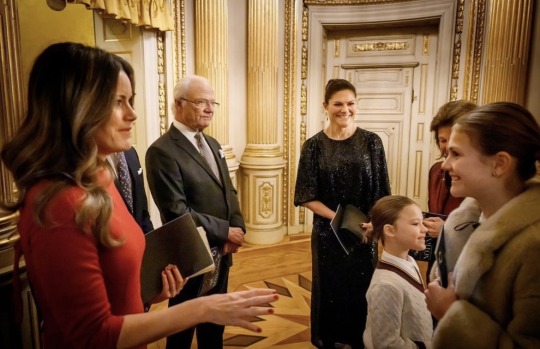


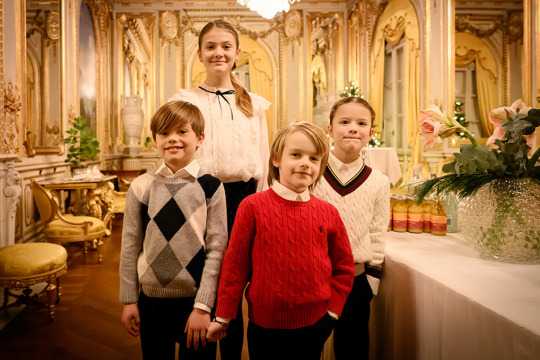
17th December 2023 // The King, Queen, Crown Princess Victoria and her two children, and Princess Sofia and her two oldest sons were seen on an evening out at the Royal Opera in Stockholm, watching The Nut Cracker.
#swedish royal family#crown princess victoria#my upload#king carl xvi gustaf#king carl gustaf#princess estelle#queen silvia#prince oscar#princess sofia#prince alexander#prince gabriel#2023#December 2023#opera
105 notes
·
View notes
Text

Jenny Lind - THE "METHOD."
The voice was a brilliant and powerful Soprano, combining the volume and sonority of the true Soprano drammatico — to which class of voices it unquestionably belonged — with the lightness and flexibility peculiar to the more ductile and airy Soprano sfogato, with the characteristic tenuity of which it had, however, nothing in common.
Its compass extended from B below the stave, to G on the fourth line above it — in technical language, from b to G ; that is to say, a clear range of two octaves and a sixth.

The various registers of this extended compass were so skilfully blended into one, by the effect of art, that it was impossible for the most delicate or attentive ear to detect their points of junction. In fact, after the completion of its cultivation under the guidance of Signer Garcia, the entire voice became one homogeneous whole, so even in its calibre, that the notes were avowedly sung without a thought as to the best way of "placing" them.
Certain regions, however, possessed marked aesthetic qualities, very clearly distinguishable, though they could be modified, at will, in accordance with the demands of the passages into which they were introduced. For instance, three notes of the middle register, were invested, in piano passages, with a veiled tone of ravishing beauty — as in the long-drawn A, in the middle register, which forms the opening note of Casta diva. These three notes were more seriously iu jured than any other region of the voice, by the hard work and faulty method of production that had been forced upon Mdlle. Liud before her journey to Paris. It is well known to every experienced Maestro di Canto, that more voices are injured by the attempt to sing these three important notes in the lower instead of in the middle register, than by any other error of production whatever ; and there can be no doubt that it was this error that caused so much trouble to Mdlle. Lind, who, notwithstanding the beautiful tone by which the notes in question were afterwards characterised, assured Froken Signe Hebbe * that she believed that they " never became quite right."
Of the F# so much admired by Mendelssohn, the A above it, brought prominently forward in a syncopated passage in the same slow movement of Casta diva, and the same A, with the C above it, used as the first two notes in the Taitzlied aus Dalelcarlien, we have already spoken in former chapters.
It was remarkable that these exceptionally high notes, though brilliant beyond description, when used at their full power, could be reduced to a pianissimo as perfect as that of the veiled tones of the middle register. The pianissimo, indeed, was one of the most beautiful features of Mdlle. Lind's singing. It reached to the remotest corner of the largest theatre or concert-room in which she sang ; it was as rich and full as her mezzo forte ; yet it was so irnlj piano that it fell upon the ear with the charm of a whisper, only just strong- enough to be audible. The reader will not have forgotten that Her Majesty regarded this pianissimo as one of the most beautiful characteristics of Mdlle. Lind's singing, and that, in the letter , Chopin spoke of its " charm " as " indescribable."
A wholly different effect — though bearing a certain sort of analogy to this — was produced in the Koricef/ian Echo Song by a pecuhar tightening of the throat, which Madame Goldschmidt once tried to explain to the writer, though the process was so purely subjective that she said it was almost impossible to describe it in words. The effect produced so nearly resembled that of a natural echo, reverberated from the opposite wall, that it never failed to mystify an audience before which it was presented for the first time.
The notes, C, D, E, F, G, A, marked (g) in our diagram, were noticed by Mdlle. Lind, at a very early period, as the best notes of her voice. And judging, from their position in the scale, that her voice was intended by Nature to develope into a Soprano of exceptional height, she practised these notes, with the semitones between them, more diligently than any others, with the full determination to extend the process until the tone of the remaining portions of the voice became as rich, as pure, and as powerful, as that of the six notes which she regarded as forming the fundamental basis of the whole. How fully she succeeded in carrying out this intention we know already ; and it is scarcely too much to say, that it was to this firm resolve, and the clear foresight which prompted it, that her ultimate success is mainly to be attributed.
Mdlle. Lind's voice was not by nature a flexible one. The rich sustained tones of the soprano drammatico were far more congenial to it, than the rapid execution which usually characterises the lighter class of soprano voices. But this she attained also, by almost superhuman labour. Her perseverance was indefatigable. Among the Cadenze with which she was accustomed to embellish Jier favourite Airs was one adapted to a Movement from Beatrice di Tenda, introducing a scale passage ascending chromatically to the upper E flat, and then descending in the same manner. She once, while at the zenith of her career, told Froken
Signe Hebbe that she had practised this passage all her life, but that it was only quite lately that she had succeeded in satisfying herself with it ; adding, that she never allowed herself to indulge in singing such difficult passages before the public, until she had thoroughly mastered them, but preferred simplifying them to running the risk of an imperfect rendering of the notes.
Another remarkable feature in Mdlle. Lind's singing was the shake, which she delivered, at will, either with unapproachable brilliancy, or in the form of a whisper, more like the warbling of a bird than the utterance of a human voice.
Though it is necessary that a perfect shake should always begin with, and lay the metrical accent continuously upon, the written note, it is notorious that most shakes fail through want of attention on the part of the singer to the upper auxiliary or unwritten note. The general tendency is to let this note gradually flatten, until, in very bad cases, the distance between the two notes is diminished from a tone, to little more than a semitone. So well is this fact known, that the late Mr. Cipriani Potter once told the writer how he had been taught, in his youth, to separate the notes so widely that " a cocked hat could be thrown between them." Mdlle. Lind devised a cure for this corrupt delivery of the shake. In teaching, she legem by impressing the upjjer note upon the ear, as the most important, both as to strength and duration, at this early stage of the process ; leaning, as it were, upon it, and slurring up to it from the lower interval. She employed for this purpose, first, the leap of a fifth, then that of a fourth, and so on, until she reached the semitone, continuing the shake exercise between the two intervals, ivhatever their distance, for some time, before proceeding from the wider intervals to a lesser one ; always adhering to the upper note as the most important one ; and always making beginners practise it with extreme slowness.*
The following exemplification of this particular exercise, written, by herself, a few years ago, for the guidance of a young vocalist, has been found among her music : —


At a later period of instruction, the notes marked {a) and (b) were to be omitted, and the succession of intervals blended into one continuous exercise, thus : —

But it was not until after considerable advance had been made, that the exercise was allowed to be sung with any degree of quickness.
When, at last, after diligent practice, the perfect shake was attained, it was sung with the rhythmic accent on the real or written note, thus : —

not thus : —

The various effects we have here attempted to describe would have been impossible, but for that skilful management of the breath of which we have before had occasion to speak when treating of Mdlle. Lind's studies under the guidance of Signor Garcia. Her chest had not the natural capacity of Mdlle. Alboni's, or Signor Enbini's ; but she renewed her breath so rapidly, so quietly, so cleverly, that the closest observer could never detect the moment at which the lungs were replenished ; and, by the outside world, her extraordinary sustaining power was attributed to abnormal capacity of the lungs. The apparent ease with which she attained this difficult end was due to an artfully-studied combination of the processes technically termed "costal" and "clavicular" and " davicular * breathing " ; in the first of which — used only after the completion of a distinct phrase of the vocal melody — the lower part or " base " of the lungs, freed from the last remains of the previous breathy is refilled, to its utmost capacity, without undue precipitation, yet with sufficient rapidity to answer all practical purposes ; while in the second — used for the continuation of phrases too long for delivery within the limits of a single inspiration — the lungs are neither completely emjjtied, nor completely refilled^ but replenished only, by means of a gentle inhalation, confined to that portion of the organ which lies immediately beneath the davicuJce, or collar-bones. The skill wdth which these two widely different processes were interchanged, when circumstance demanded their alternate employment, was such as can only be acquired by long and unwearied practice, untrammelled by prejudice either for or against any special method W'hatever ; and it is not too much to say, that it was to the sustaining power, acquired by this careful management of the breath, that Mdlle. Lind owed her beautiful pianissimo, and that marvellous command of the messa di voce which enabled her to swell out a crescendo to its utmost limit, and follow it, without a break, by a diminuendo which died away to an imperceptible point, so completely covering the end of the note that no ear could detect the moment at which it faded into silence.
And no less complete was Mdlle. Lmd's command over the difficulties of articulation than over those of vocalisation pure and simple. Her delivery of the difficult — we had almost said, impossible — passage in the grand Scena from Der Freischiitz — Tduscht das Licht des Monds mich nicht ! f — though so clear and distinct that not a syllable lost its full meaning, was nevertheless so soft and smooth that it could scarcely have been surpassed in Italian. We do not hesitate to say that she was the only great singer by whom we have heard tliis famous crux surmounted without a trace of harshness in the delivery of the words. On one occasion Madame Birch-Pfeiffer left her, alone, practising the word zersplittre (" to shiver to pieces "), on a high B flat, in the opening Recitative in Norma; and, returning several hours afterwards, found her still practising the same word. And she continued to practise it, until she succeeded in pronouncing it quite perfectly on the high note, though few even of the best German vocalists attain a better pronunciation than zerspldttre. But she never erred in the delivery of even the most difficult word in any language whatsoever. So perfect was the mastery she exercised over larynx, throat, lips, tongue, teeth, soft palate, each and all, that never a syllable was stifled at its birth, never a vowel-sound corrupted in its passage through the longest groups of mingled leap, arpeggio, or scale. It was this high quality that lent so potent a charm to the complicated " divisions," the rapid passages of ftoritura of which Lablache, in describing them to Madame Grisi, said that " every note was a pearl." The purity of the vowel-sound, by which the pearls were strung together, secured their perfect equality of tone and timbre ; and, whether the most rapid notes were sung legato, or staccato, they either ran on velvet, or rang out sharply and clearly as the touch of a m.andolme. The tecJmique, in either case, was absolutely faultless, and its perfection was entirely the result of hard work, indefatigable practice, unwearying study. To the end of her career, she never sang in the evening without preparing for the performance by practising for . a long time, earlier in the day — generally, a mezza voce, to avoid fatiguing the voice unnecessarily, but, never sparing the time or trouble. And herein lay the secret of her victory over difficulties which tempt so many less courageous aspirants to despair.
Undoubtedly, the " method " thus diligently cultivated was, in many points, subjective. Mdlle. Lind felt, but could not always explain, the principles upon which she worked. We possess, however, a letter written by her to Fraulein von Jaeger, which enters into some particulars connected with our present subject of consideration, so curiously interesting, that we cannot refrain from publishing them, though the communication bears a date far later than that at which the purely narrative portion of our work comes to a close.
" Ems, June 8, 1855. " And what is my good Gusti doing ? Is she working as industriously as ever at her singing ? " The chief thing that I have to say, today, concerns that part of Friedrich Schmitt's ' Singing-school ' of which you wish for an explanation.*
" I do not think you have rightly understood the point. Eead the paragraph again, and it will surely become clearer to you.
" Naturally, he does not mean that you are to attack a note twice ; but that, before you sound the note, the larynx must be properly prepared in the position in which the forthcoming sound lies, whether high or low. The result of this is a firm attack ; and, as soon as you have sounded one note, you must spring so nimbly on all those above — or below it — that no rift can be detected between the sounds ; and, in this way, the completion of the phrase is accomplished without a break. For instance, the notes

must so hang together that they make one whole ; and this results from binding and striking them, at one and the same time — ^if I may so express myself — though it is almost impossible to explain this clearly in words. But I have often spoken to my Ousti about this, and shown it to her. It lies in the flexibility of the larynx, and must therefore be practised. Sing your exercise, then, so that this flexibility of the throat may be quickly developed. The attack of the single notes will thus be improved ; and the string of notes will follow."
Madame Goldschmidt is quite right, when she says that " it is almost impossible to explain this clearly, in words." No one knew, better than she did, that the best ' Singing-schools ' that ever were published are useless without the aid of a teacher ; for until she found a teacher in Signer Garcia, she wandered daily farther and farther from the true path, until, in the end, her voice but narrowly escaped from utter destruction. When once the truth was pointed out to her, her quick perception and unerring musical instinct enabled her to grasp it at a glance ; and, when once she began to practise upon true principles, the difficulties she had formerly experienced with regard to the method of voice-production were at an end.
On one point she always insisted very strongly. She had an innate hatred of the contortions with which so many vocalists of inferior order disfigure their features when delivering the passages they wish to render most impressive. She was never satisfied with a song, unless the singer " looked pleasant." She regarded singing as a beautiful gift of Nature ; a gift for which those who possess it should feel truly thanlvf ul, and proclaim their thankfulness by the expression of their features. She had a horror of careless articulation, even in speaking. And she felt firmly persuaded that the practice of singing, on the true " method," tended to the invigoration of the body, and especially of a weak chest. She even thought that the lives of many persons with a tendency to consumption might have been prolonged, if they had learned to breathe, and sing, in the right way — an opinion which is held by many medical authorities of highest reputation, and the correctness of which is undoubtedly proved by recorded facts.
So deeply penetrated was Madame Goldschmidt with love for her Art, and faith in its ennobling influence, that, to the end of her life, she took the keenest interest in promoting its instruction, upon the true and well-tried principles of the pure Italian School.
The following letter to the late Mr. H. C. Deacon, in whose method of instruction she felt great confidence, is one of the last she wrote upon the subject : —
" Wynd's Point, Colwall, Malvern, July 31st, 1885. " Dear Mr. Deacox, " It was very kind of you to let me know about the Examinations.* I am glad to hear that my sheep did not badly. If would put her mind into her work she might become a singer. " I can but do my best ; and, with my enormous experience, and a life's study, I ought to be able to bring out singers. " Singing is as much moral and mental as it is mechanical. It is the combination of those qualities which alone can form the master and pupil. " I hope you and Mrs. Deacon are better, and that you will now have some rest. " Yours sincerely, " J. L. GOLDSCHMIDT."
We can scarcely close our present chapter more profitably than by presenting our readers with a summary of the work performed by Mdlle. Lind, in connection with the Operatic Stage, between her first appearance in Der Freiscliutz, on the 7th of March, 1838, and her last, in Rolerto il Diavolo, on the 10th of May, 1849 — a period of little more than eleven years, during which she appeared in 30 Operas, 677 times.
Jenny Lind the artist, 1820-1851 : a memoir of Madame Jenny Lind Goldschmidt, her art-life and dramatic career, from original documents, letters, MS. diaries, &c., collected by Mr. Otto Goldschmidt by Holland, Henry Scott, 1847-1918; Rockstro, W. S. (William Smyth), 1823-1895
#classical music#opera#music history#bel canto#composer#classical composer#aria#classical studies#maestro#chest voice#Jenny Lind#The Swedish Nightingale#Swedish Nightingale#The Nightingale#classical history#history of music#historian of music#musician#musicians#diva#prima donna#Royal College of Music#methods of singing#Soprano sfogato#Jenny Lind Goldschmidt
8 notes
·
View notes
Text
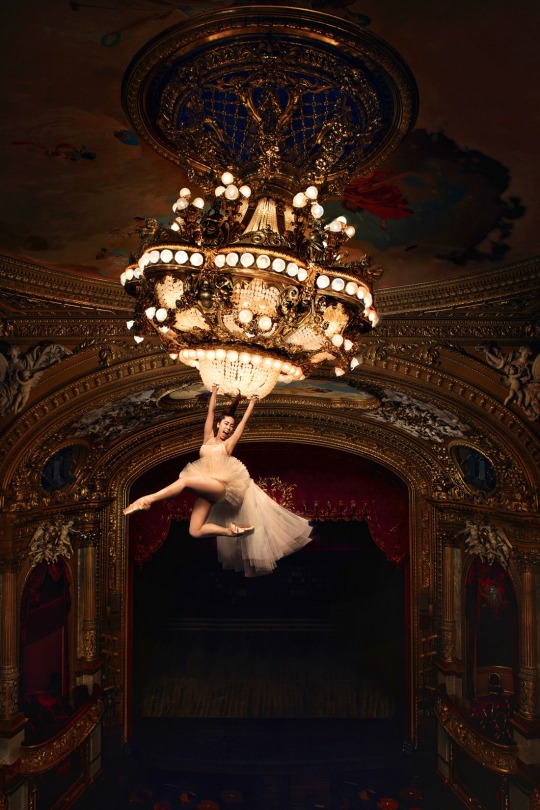
A NIGHT AT THE OPERA by KAROLINA HENKE (Sweden 🇸🇪)
📍 THE ROYAL SWEDISH OPERA
The Royal Swedish Opera includes the Royal Ballet, Young at the Opera, the Royal Swedish Orchestra and the Royal Swedish Opera Chorus.
24 notes
·
View notes
Text
Pat Reviews Opera is Back, Baby!
A lot of things have happened since the last time I reviewed an opera, which was, woah, over three years ago. That doesn't mean I have not been to the opera in that long. I just haven't written any reviews on them. My mind has been occupied elsewhere, both with changes in my private life, and... well... (gestures vaguely at the goings-on in this wretched war-ridden world).
Anyway!
Yesterday, I went to see Carmen at the Royal Swedish Opera. The same production as I've reviewed before. It's also where my icon is from. I loved it and had great fun, no notes!
Last time I was sitting right up front. Oh god, it was back in February 2020. Right before everything happened. Yesterday, too old and too graduated to qualify for the Opera's generous youth/student discount (50% off any seat), I sat high up and far from the stage, but equipped with these fancy opera glasses, that frankly cost more than I dare to admit.


And boy, did they elevate the experience! Not only did they do exactly what opera glasses are supposed to do, they're also really small and weigh next to nothing. They're going to be a steady companion to future shows. One of which is tomorrow!
Stay tuned for more reviews from yours truly.
5 notes
·
View notes
Text
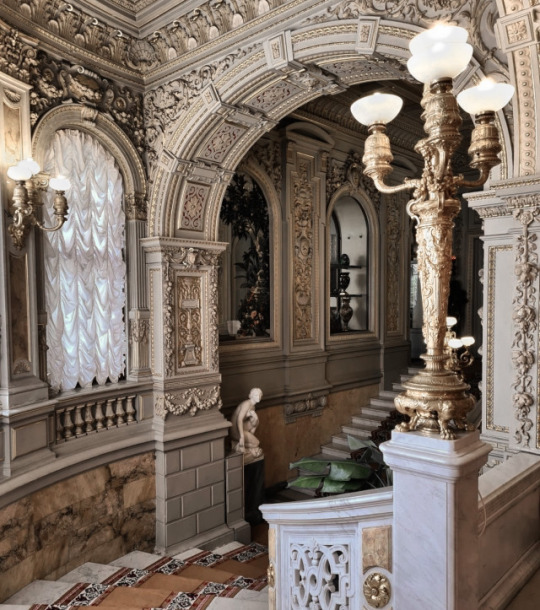
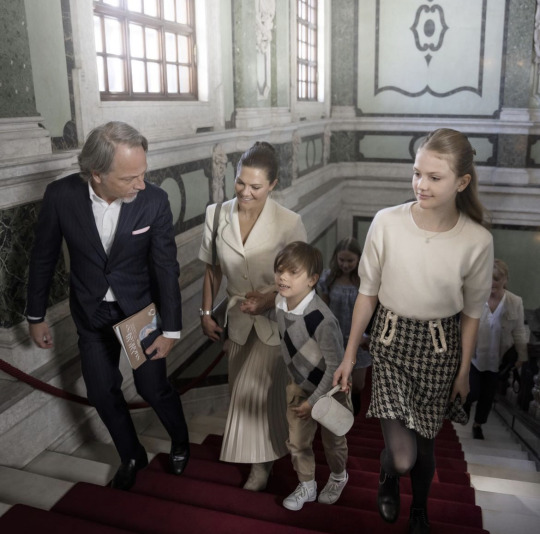

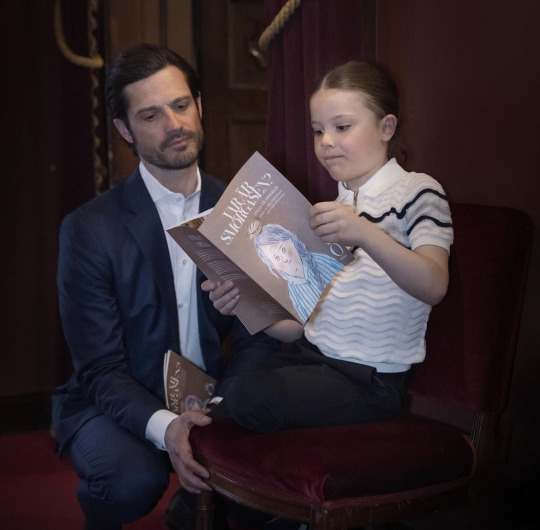
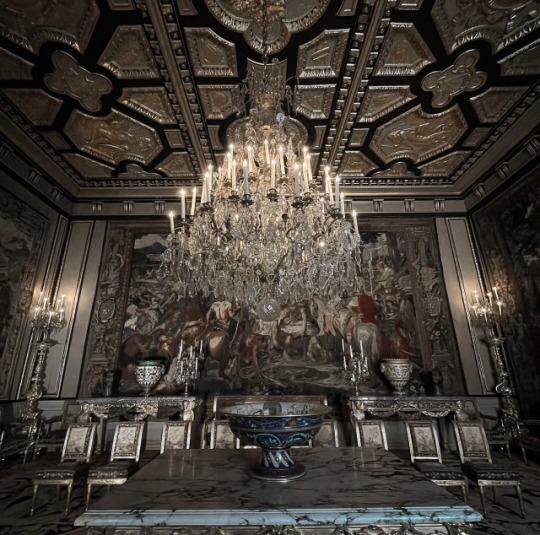


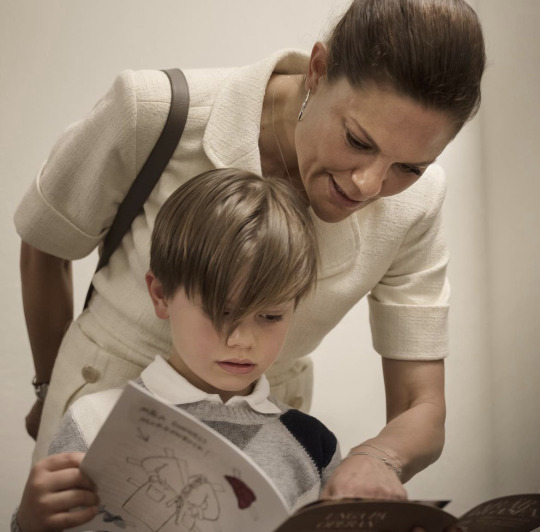
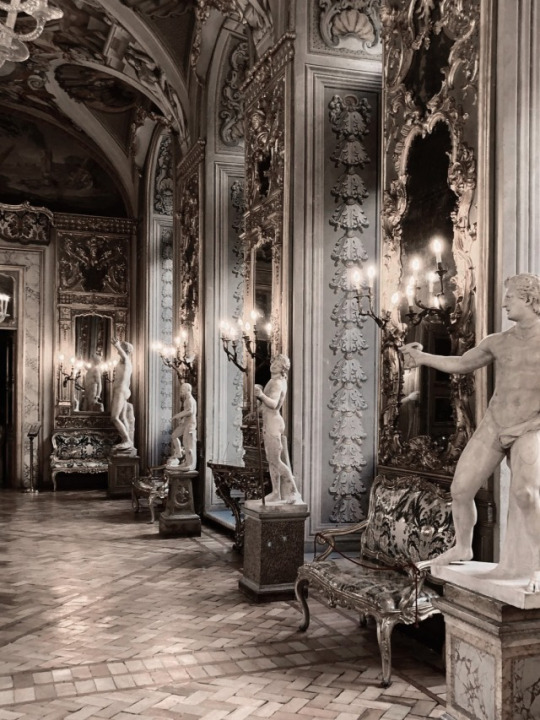
the swedish royals in palaces
#not all of these pics are from the opera hehehe#does that count as cheating? lol#royal series#my edit#swedish royal family#scandinavian royalty#moodboard#crown princess victoria#prince daniel#princess estelle#prince oscar#prince carl philip#princess sofia#prince gabriel#prince alexander#royal aesthetics#royalcore#royaltyedit
37 notes
·
View notes
Text





Prince Carl Philip of Sweden, Princess Sofia of Sweden, Prince Alexander of Sweden and Prince Gabriel of Sweden watch the show “Var är smörgåsen ?” at the Royal Opera House, in Stockholm, Sweden -April 21st 2023.
#prince carl philip#princess sofia#prince alexander#prince gabriel#prince gabriel of sweden#swedish royal family#sweden#2023#april 2023#royal opera house 2023#royal opera house#royal children#my edit
16 notes
·
View notes
Text

Royal Swedish Opera, Stockholm, Sweden.
Photo by David Leventi
#art#photography#nature#landscape#aesthetic#portrait#painting#contemporary art#architecture#abstract#sweden#royal opera house#curators on tumblr
557 notes
·
View notes
Text
Cover Star|A sincere conversation with Rebecca Ferguson, from "Mission: Impossible" to "Dune": "If there was a pause button in life..."
Over the past few years, we've been immersed in the eyes of Rebecca Ferguson. She is "Lady Jessica", the mother of Paul, the protagonist of "Dune 2", and "Agent Ilsa" in the "Mission: Impossible" movie series. Her charm that is not limited by frames makes every character more real and three-dimensional.
In the cold winter, we flew to London to meet Rebecca Ferguson. There was an especially warm smile in the studio. She had a sense of relaxation, sitting casually on the stacked tires, but she was also like a small flame, burning the wonderful thoughts in her mind. In front of the camera, she carefully stretched her figure and carefully selected the look she liked. With a mini racing track laid out on the ground, Rebecca Ferguson created a different sense of tension and story.
From ballet to stunts
We will always remember that in 2014, Rebecca Ferguson hid the fact that she was afraid of high-altitude stunts while filming "Mission Impossible: Runaway Nation." Tom Cruise was surprised later, "She never told anyone! She trained for it and completed it full on" However, in the face of these past events, he asked her if she agreed that she was a person who "decided to do whatever she did." The kind of person who arrives? Rebecca Ferguson replied that she doesn’t like to oversimplify or emphasize her own behavior. “I also don’t like to have a predetermined impression of myself because it may lead to self-aggrandizement (laughs). I think most people I work with also have the same traits. ! When they want to achieve something, they always give it their all, not at the expense of others. I hope it’s a process that’s kind, considerate, and exciting.”
Born in Sweden to a British mother, Rebecca Ferguson graduated from Adolf Fredrik's Music School, a well-known music school in Stockholm. At the age of 15, she participated in the soap opera "Nya Tider". She also studied ballet, jazz and funk at the Royal Swedish Ballet School, tap dance, etc. Her diverse exploration of art since she was a child seems to have given her an "artist" eye, and perhaps a bit of an artist's temperament. Her heart is like a jumping note, and she can always talk about any topic; her attention to details also injects countless inspiration and boldness into the photos.
life pause button
After Rebecca Ferguson worked in Sweden for more than ten years and gave birth to her first child, her name gradually became known to the world. In 2013, she played Elizabeth Woodville, the controversial queen of King Edward IV of England during the Wars of the Roses, in the BBC historical drama The White Queen. This English-language debut earned her a Golden Globe nomination. Since then, she has become one of the busiest stars in Hollywood. The third film in the Mission: Impossible series she starred in premiered in 2023. For months, fans discussed the poignant battle of her character Ilsa Faust; the subsequent dystopian series starring Rebecca Ferguson The first and second seasons of "Silo" premiered on Apple TV+, during which time the craze for "Dune: Part 2" broke out. Compared with the growth story of Timothée Chalamet, we seem to be more often deeply attracted by the mystery, elegance, beauty and strength (and exquisite veil!) of the protagonist's mother Lady Jessica. Since the battle of wits in the first movie The fierce physical fight is still unforgettable!
Recently, she announced her participation in the movie version of "Peaky Blinders", co-starring Cillian Murphy, the protagonist of the British period crime drama. Ask her what else she wants to challenge in her career? "There is nothing I want to change, but I will always think about challenges and chasing dreams. I have never been on the stage, and I also want to do some theater work. This is my biggest wish now, and it may also be my biggest fear. !”
The theme of the February issue of "Harper's BAZAAR Taiwan" is about F1 racing and speed. I am curious about what she hopes to "fast forward" to the ending experience? "Absolutely not! I don't want to fast forward at all! I think time goes by fast enough already. If there was an option to rewind, I would rather have that - or press the pause button - to pause time and feel my surroundings. Maybe we can revisit some of the moments to let us know we’re not at the end yet.”
Naughty, Libra, maternal, mobile, practical in building dreams, artist, etc., we wrote a character sketch of Rebecca Ferguson; and then through her sincere answers, there was an interesting collision of souls.
Fashion is a language
Rebecca Ferguson (RF): I don’t know, maybe both? I think my answer is, we learn over time. We learn by making mistakes, and we grow by listening to and observing others. At the same time, I like people and I like to communicate! If the other person is interesting and smart and makes me feel smart too, the conversation is interesting, or if the other person is challenging in some other way, that's also engaging. But I'm not always witty, sometimes I'm naughty and sometimes even rude, which isn't really good.
HB: You are a fashion icon on the red carpet, but we also want to know about your personal style and experience. Has your daily fashion changed because of the crazy costumes you wear? Or has it changed as a result of becoming a mother and entering a different stage of life?
RF: I think life is fluid and we change with it. What's important to me is comfort, although not necessarily to the standards of fashion. But fashion is in some ways an expression of identity and how we want to be seen; on certain occasions, it is also important to present yourself in a certain way. But on other occasions, like when I go to work, I usually wear fitness clothes with a big hat and T-shirt on top. When the weather is cold, it’s more casual. Even so, I will wear cool sneakers and some very colorful socks! I still left my mark, I was still me. Of course, working with different stylists has also changed me, some experiences have been great, but others have also made me realize what doesn't work for me. Fashion is really like a language, right? For example, working with my current stylist, Tom Eerebout, he takes me into some areas that I really like, and the whole process is wonderful. I discovered that I loved fashion and expressing myself through clothing and accessories.
HB: In early interviews you talked about a childhood full of creativity and memories, such as dancing, music, modeling, and gymnastics. Can you share with us how you explore your passion? Have these experiences shaped who you are today?
RF: I explored my passion through the job opportunities I was offered. I will use my past physical experience if needed! For example, when I was filming "Mission: Impossible," those dance and physical training helped me shape the character. As for another question, I think everything in life influences everything; everything we do is filling up the "backpack in life", whether it is good or bad experiences, and these experiences ultimately shape us.
HB: Can you share with us what is the best and worst thing that has ever happened to you in the entertainment industry?
RF: To be able to be a part of the entertainment industry, have a place here, and have a workspace to express myself, to be able to do all of that consistently; and to be able to make enough money to take care of myself, take care of my family (more than put food on the table), work It also makes me feel fulfilled and satisfied...it's really great. Of course, there are a lot of not-so-good things, but I'm at a very good peak at the moment, so I prefer to emphasize the positive things.
20 notes
·
View notes
Text

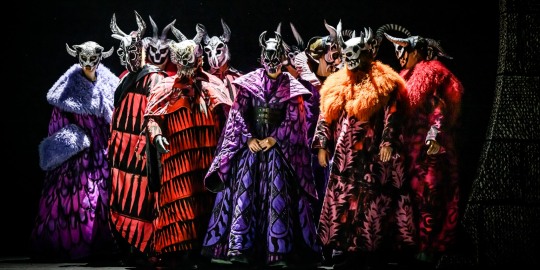
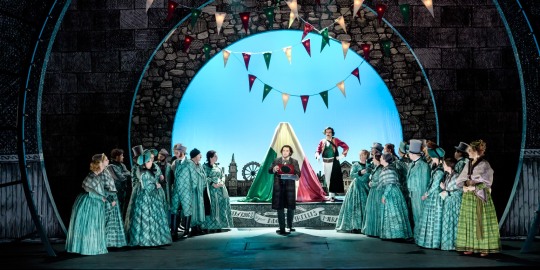

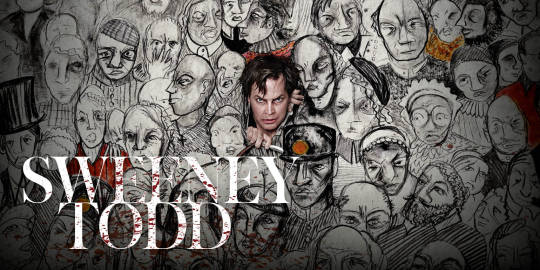
Sweeney Todd at the Royal Swedish Opera, 2023.
Photo: Sören Vilks/Annika Berglund.
#sweeney todd#stephen sondheim#musicals#sweeney todd the demon barber of fleet street#musical theater#this SLAPPED i don't remember when i last saw such a visually striking show
744 notes
·
View notes
Text
The Catalan authors who were kept out of the Nobel Literature Prize for being Catalan
Did you know that there have been a handful of Catalan writers who were candidates to win the Nobel Literature Prize, but because of Spanish interference they never did?
The Nobel Prize discloses its debate and reasoning process 50 years after each edition. This means that we already know the details of what happened in the earliest editions of this Prize, which was started in 1901.
The name of the Catalan play-writer Àngel Guimerà (author of Marta of the Lowlands, Mar i cel, La filla del mar...), whose works have been translated to many languages and played all around Europe and the Americas, with many film and opera adaptations, sounded often in the Nobel committee. He was presented as a candidate to win the Nobel Prize 17 times in a row, since 1907 until his death in 1924. In the editions of 1917 and 1919, many were convinced he would win. However, the declassified documents show why he didn't: as written by the man who was then president of the Nobel Committee, Haralg Härne, Guimerà wasn't given the prize "to avoid hurting the national pride of the Spanish". In 1919, Härne writes that the objective of the Nobel Prize is to promote peace and thus to award Guimerà and show support for a minority culture would be to encourage internal conflict (🤦). The Academy decided that they couldn't give a prize to Guimerà "before awarding another writer who expresses himself in the most ancient noble language of the country" (weird way to mean "the official language", aka Spanish, because they surely didn't mean Basque). In summary, if a Catalan is to be considered, he must always be second to a Spanish man. Even when the Catalan is, in the words of the Nobel Academy, "the most eminent writer of our times", he can never be considered an equal, always must be behind.
Àngel Guimerà wrote in the Catalan language, which was discriminated against by Spanish and considered an enemy by the Spanish government and much of Spanish society. Guimerà was a firm defender of the right to use the Catalan language and that nobody should be forced to speak the imperial languages instead of their own, and was involved with the political movement for the rights of Catalan people. For this reason, every time the famous Swedish academy was considering Guimerà, the Spanish Royal Academy of Language (RAE) fought it with all its might. Nowadays, Guimerà's theatre plays continue to move thousands of spectators every year.
The same happened again with the poet Josep Carner. In the 1960s, Josep Carner was on exile, because he was a Catalan poet writing in Catalan and who stood against the fascist dictatorship of Spain, which persecuted the Catalan language and identity. Famous writers from around the world, including T. S. Eliot, François Mauriac, Giuseppe Ungaretti and Roger Caillois, supported Josep Carner's candidacy to win the Nobel, but the Spanish Government did everything possible to obstruct it. We don't know if Carner would have won or not, but he was deprived of even trying because of the Spanish government's hatred of Catalan.
Something similar seems to have happened between the 1970s and 1990s to three other Catalan poets: Salvador Espriu, J. V. Foix, and Miquel Martí i Pol, where they did not get any support from the Spanish authorities, so we don't know how it would have ended up.
Another example of what it means to have a state actively working against you because of bigotry against your cultural group.
Sources: book Det litterära Nobelpriset by the president of the Nobel Committee Kjell Espmarck, Pep Antoni Roig (El Nacional), Joan Lluís-Lluís (El Punt Avui), and Jordi Marrugat (Institut Ramon Llull).
#literatura#arts#història#àngel guimerà#josep carner#literature#books#reading#nobel prize#nobel literature prize#catalanophobia#catalanofòbia#catalan#cultures#writing#human rights#minority languages#1900s#history
78 notes
·
View notes
Text
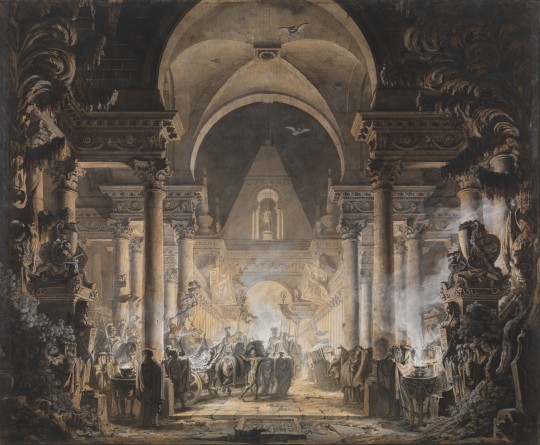
The Tomb of Agamemnon by Louis-Jean Desprez. French, c. 1787. Black ink and gray washes, heightened with white gouache, on beige paper. In the collection of the Metropolitan Museum of Art.
Description from the Met:
Trained as an architect, the French artist Desprez was appointed by King Gustav III of Sweden in 1784 as the head stage designer for the Royal Opera in Stockholm. This drawing relates to the sets Desprez made for the Swedish opera Electra, which premiered at Drottningholm Castle on July 22, 1787. The scene of Agamemnon’s interment is in the prologue, which opens with Electra and Orestes plotting to avenge their father’s murder. Desprez’s rendering is cloaked in gloom, with torches and censers dramatically lighting the architecture from below.
#neoclassicism#Agamemnon#Louis-Jean Desprez#Louis Jean Desprez#stage design#theater design#Electra#opera#French#art#works on paper#mythology#pen and ink#gouache
248 notes
·
View notes
Text
So I saw this post about how in the books, Dracula is actually an old man and I always imagined Dracula looked like older Christopher Lee, who played him while he was a kid. While looking him up I accidentally discovered that Christopher Lee was the coolest person in the universe and there is a non-zero chance he was actually Dracula in real life

Sir Christopher Frank Carandini Lee CBE CStJ (May 27th 1922 - June 7th 2015), Sir because he was knighted in 2009 for his charity and his contributions to cinema
So first of all, I saw that he actually knew 8 LANGUAGES (English, Spanish, French, Swedish, Italian, German, Russian and Greek) and was also a staggering 6 feet 5 inches in height. Born in Belgravia in London, one of the most Dracula sounding places I’ve ever heard of, here’s some insane facts about him
•His father, Lieutenant Colonel Geoffrey Trollope Lee of the 60th King's Royal Rifle Corps, fought in the Boer War and World War 1
•His mother, Countess Estelle Marie (née Carandini di Sarzano) was an Edwardian beauty who was painted by Sir John Lavery, Oswald Birley, and Olive Snell, and sculpted by Clare Sheridan
•Lee's maternal great-grandfather, Jerome Carandini, the Marquis of Sarzano, was an Italian political refugee
•Jerome’s wife was English-born opera singer Marie Carandini (née Burgess), meaning that Lee is also related to famous opera singer Rosina Palmer
•His parents would divorce when he was four and his mother would marry Harcourt George St-Croix Rose, banker and uncle of Ian Fleming, making the author of the James Bond books Lee’s step cousin. Fleming would then offer him two roles as the antagonist in the film adaptations of his books, though he was only able to land the antagonist role in The Man With the Golden Gun. It’s believed his role in the film is significantly better and more complex than his book counterpart, played as “a dark side of Bond”
•His family would move and they lived next door to famous silent film actor Eric Maturin
•One night, before he was even 9 years old, he was introduced to Prince Yusupov and Grand Duke Dmitri Pavlovich, THE ASSASSINS OF GRIGORI RASPUTIN, WHOM LEE WOULD GO ON TO PLAY MANY YEARS LATER
•Lee applied for a scholarship to Eton, where his interview was in the presence of the ghost story author M.R. James, who is considered one of the best English language ghost story writers in history and who widely influenced modern horror
•He only missed by King’s Scholar by one place by being bad at math, one of the only flaws God gave him
•Due to lack of working opportunities, Lee was sent to the French Riviera and stayed with his sister and her friends while she was on holiday, and on the way there he stopped briefly in Paris with journalist Webb Miller, a friend of his step father. Webb Miller was an American journalist and war correspondent and was nominated for a Pulitzer Prize for his coverage of the execution of the French serial killer Henri Désiré Landru, also known as BLUEBEARD. He also helped turn world opinion against British colonial rule of India
•While staying with Miller he witnessed Eugen Weidmann’s execution by guillotine, the last public execution ever performed in France
•Arriving in Menton, Lee stayed with the Russian Mazirov family, living among exiled princely families
•When World War 2 began, Lee volunteered to fight for the Finnish Army against the Soviet Union in the Winter War, and a year later, Lee would join the Home Guard. After his father died, he would join the Royal Air Force and was an intelligence officer and leading aircraft man and would later retire as a flight lieutenant in 1946
•While spending some time on leave in Naples, Lee climbed Mount Vesuvius, which erupted only three days later
•After nearly dying in an assault on Monte Cassino, Lee was able to visit Rome where he met his mother’s cousin Nicolò Carandini, who had fought in the Italian Resistance Movement. Nicolò would later go on to be the Italian Ambassador to Britain. Nicolò was actually the one to convince Lee to become an actor in the first place
•Oh yeah Christopher Lee was seconded to the Central Registry of War Criminals and Security Suspects where he was tasked with HELPING TRACK DOWN NAZI WAR CRIMINALS
•Lee’s stepfather served as a captain in the Intelligence Corps
•He was actually told he was too tall to be an actor, though that would honestly help him considering one of his first roles was as The Creature in The Curse of Frankenstein
•He was cast in Captain Horatio Hornblower R.N (1951) as a Spanish captain due to not only his fluency in Spanish but also he knew how to fence!
•Lee’s portrayal of Dracula had a crucial aspect of it which Bela Lugosi’s didn’t have: sexuality, a prime aspect of the original novels.
•While being trapped into playing Dracula under Hammer Film Productions, Lee actually hated the script so much that he would try his best to sneak actual lines from the original novel into the script
•Ironically, he was rejected from playing in The Longest Day because “he didn’t look like a military man”
•Christopher Lee was friends with author Dennis Wheatley, who “was responsible for bringing the occult into him”. He would go on to play in two film adaptations of his novels
•His biggest regret in his career is not taking the role of Sam Loomis from Halloween when offered to him
•Christopher Lee was the only person involved with the Lord of the Rings movies to have actually met J.R.R Tolkien
•When playing Count Dooku, he actually did most of the swordsmanship himself
•Christopher Lee was the second oldest living performer to enter the Billboard Top 100 charts with the song “Jingle Hell” at 91 years old. After media attention, he would get No. 18, and Lee became the oldest person to ever hit the Billboard Top 20 chart
I really am leaving some stuff out here and I may go on
#christopher lee#dracula#dracula by bram stoker#frankensteins creature#adam frankenstein#frankenstein#lord of the rings#star wars#count dooku#saruman#james bond#ian fleming
34 notes
·
View notes
Text











OTD in Music History: Legendary 19th Century singer Jenny Lind (1820 - 1887) dies in England. Nicknamed "The Swedish Nightingale," Lind was one of the most fabulously successful musical superstars of her era. After making her big break in a performance of Carl Maria von Weber's (1786 - 1826) "Der Freischutz" in Stockholm in 1838, Lind embarked upon an extended European tour during the 1840's before turning her eyes to the ultimate financial prize: North America. In 1850, Lind traveled to America at the "invitation" of P.T. Barnum (1810 - 1891), who promised to "endlessly promote her" and make her "fabulously wealthy." He kept his word on both counts; indeed, his constant over-the-top marketing campaign eventually wore on Lind's nerves, and after performing 93 large-scale concerts for Barnum she actually invoked a termination clause in her contract and then continued the rest of the tour under own management, ultimately earning more than $350,000 (equivalent to ~$13,000,000 in 2024-adjusted dollars) for her efforts. (NB: This tour was a major plot point in the 2017 Hollywood movie "The Greatest Showman," which portrays Lind as a fame- and money-hungry seductress with romantic designs on Barnum. In reality, Lind was a devoutly-religious married woman who did not care for Barnum's larger-than-life personality, and she ultimately ended up donating the vast bulk of her income to a variety of charities.) After returning to Europe in 1852, Lind went into semi-retirement and focused most of her time on raising her three children, only occasionally emerging to give charity concerts. From 1855 onward she lived in Britain, where she was venerated by an adoring public. PICTURED: A relic from Lind's famous American tour — an original program that was handed out to attendees at one of her Boston appearances (c. 1850 - 1851). Featuring several hand-colored illustrations, printed lyrics to her various concert selections, and plenty of press reviews (including a glowing multi-page biography), this program itself was quite a production for its time! Also shown is a later-printed (c. 1890s/1900s) copy of a cabinet photo showing Lind (c. 1850s).
#classical music#opera#music history#bel canto#composer#classical composer#aria#classical studies#maestro#chest voice#Jenny Lind#The Swedish Nightingale#Swedish Nightingale#The Nightingale#classical history#history of music#historian of music#musician#musicians#diva#prima donna#Royal College of Music#Frédéric Chopin
5 notes
·
View notes
Photo

Gustav Holst
Gustav Holst (1874-1934) was a British composer of Swedish origin most famous for his dramatic orchestral suite The Planets, first performed in public in 1919. Holst also composed several operas, wrote sacred choral works such as The Hymn of Jesus, and was a dedicated collector of folk songs.
Early Life
Gustav Holst was born in Cheltenham on 21 September 1874, where his parents, who were of Swedish descent, had set up home. Gustav's father was an organist and piano teacher in Cheltenham. Gustav continued the family interest in music, learning piano and also conducting the local choir. His musical talent shone through, and in 1895, Gustav won a scholarship to study at the Royal College of Music in London. The Holst family had only modest means, and the scholarship – won at the second attempt – was a necessity for Gustav to widen his music education. He studied to play the trombone, an instrument he would use to eke out a living, teaching others to play the instrument and performing as part of seaside brass bands and as a member of the orchestra at the Carl Rosa Opera in London.
After graduation, Holst became a general music teacher in London. In 1903, Holst moved to Dulwich where he taught music at a girls' school, a position he would hold until 1920. In 1905, Holst also became the director of music at the St. Paul's School for Music in Hammersmith. Holst was certainly dedicated to teaching; he remained at St. Paul's for the rest of his life, but other teaching positions he held simultaneously included the music directorship at Morley College for Working Men and Women in London (1907-24) and a professorship of music at Reading University. In addition, Holst found time to return and teach composition at the Royal College of Music.
Continue reading...
36 notes
·
View notes
Text
Opera on YouTube
I've shared links to complete opera performances before, but I love to share them, so I thought I'd make a few masterposts.
These list are by no means the only complete filmed performances of these operas on YouTube, but I decided that ten links for each opera was enough for now.
By the way, some of the subtitles are just a part of the video, while others require you to click CC to see them.
Die Zauberflöte (The Magic Flute)
Hamburg Philharmonic State Opera, 1971 (Nicolai Gedda, Edith Mathis, William Workman, Christina Deutekom, Hans Sotin; conducted by Horst Stein; English subtitles)
Ingmar Bergman film, 1975 (Josef Köstlinger, Irma Urrila, Håkan Hagegård, Birgit Nordin, Ulrik Cold; conducted by Eric Ericson; sung in Swedish; English subtitles)
Salzburg Festival, 1982 (Peter Schreier, Ileana Cotrubas, Christian Bösch, Edita Gruberova, Martti Talvela; conducted by James Levine; Japanese subtitles)
Bavarian State Opera, 1983 (Francisco Araiza, Lucia Popp, Wolfgang Brendel, Edita Gruberova, Kurt Moll; conducted by Wolfgang Sawallisch; English subtitles)
Metropolitan Opera, 1991 (Francisco Araiza, Kathleen Battle, Manfred Hemm, Luciana Serra, Kurt Moll; conducted by James Levine; English subtitles)
Paris Opera, 2001 (Piotr Beczala, Dorothea Röschmann, Detlef Roth, Desirée Rancatore, Matti Salminen; conducted by Ivan Fischer; no subtitles)
Royal Opera House, Covent Garden, 2003 (Will Hartman, Dorothea Röschmann, Simon Keenlyside, Diana Damrau, Franz Josef Selig; conducted by Colin Davis; no subtitles) – Act I, Act II
La Monnaie, Brussels, 2005 (Topi Lehtipuu, Sophie Karthäuser, Stephan Loger, Ana Camelia Stefanescu, Harry Peeters; conducted by René Jacobs; French subtitles)
Kenneth Branagh film, 2006 (Joseph Kaiser, Amy Carson, Benjamin Jay Davis, Lyubov Petrova, René Pape; conducted by James Conlon; sung in English)
San Francisco Opera, 2010 (Piotr Beczala, Dina Kuznetsoca, Christopher Maltman, Erika Miklósa, Georg Zeppenfeld; conducted by Donald Runnicles; English subtitles)
La Traviata
Mario Lanfrachi studio film, 1968 (Anna Moffo, Franco Bonisolli, Gino Bechi; conducted by Giuseppe Patané; English subtitles)
Glyndebourne Festival Opera, 1987 (Marie McLaughlin, Walter MacNeil, Brent Ellis; conducted by Bernard Haitink; Italian and Portuguese subtitles)
Teatro alla Scala, 1992 (Tiziana Fabbricini, Roberto Alagna, Paolo Coni; conducted by Riccardo Muti; English subtitles)
Royal Opera House, Covent Garden, 1994 (Angela Gheorghiu, Frank Lopardo, Leo Nucci; conducted by Georg Solti; Spanish subtitles)
Teatro Giuseppe Verdi, 2003 (Stefania Bonfadelli, Scott Piper, Renato Bruson; conducted by Plácido Domingo; Spanish subtitles)
Salzburg Festival, 2005 (Anna Netrebko, Rolando Villazón, Thomas Hampson; conducted by Carlo Rizzi; no subtitles)
Los Angeles Opera, 2006 (Renée Fleming, Rolando Villazón, Renato Bruson; conducted by James Conlon; English subtitles)
Opera Festival St. Margarethen, 2008 (Kristiane Kaiser, Jean-Francois Borras, Georg Tichy; conducted by Ernst Märzendorfer; English subtitles)
Teatro Real di Madrid, 2015 (Ermonela Jaho, Francesco Demuro, Juan Jesús Rodríguez; conducted by Renato Palumbo; English subtitles)
Teatro Massimo, 2023 (Nino Machiadze, Saimir Pirgu, Roberto Frontali; conducted by Carlo Goldstein; no subtitles)
Carmen
Herbert von Karajan studio film, 1967 (Grace Bumbry, Jon Vickers; conducted by Herbert von Karajan; English subtitles)
Vienna State Opera, 1978 (Elena Obraztsova, Plácido Domingo; conducted by Carlos Kleiber; English Subtitles)
Francisco Rosi film, 1982 (Julia Migenes, Plácido Domingo; conducted by Lorin Maazel; English subtitles)
Metropolitan Opera, 1987 (Agnes Baltsa, José Carreras; conducted by James Levine; English subtitles)
London Earls Court Arena, 1989 (Maria Ewing, Jacque Trussel; conducted by Jaques Delacote; English subtitles)
Royal Opera House, Covent Garden, 1991 (Maria Ewing, Luis Lima; conducted by Zubin Mehta; English subtitles) – Acts I and II, Acts III and IV
Arena di Verona, 2003 (Marina Domashenko, Marco Berti; conducted by Alain Lombard; Italian subtitles)
Royal Opera House, Covent Garden, 2006 (Anna Caterina Antonacci, Jonas Kaufmann; conducted by Antonio Pappano; English subtitles) – Acts I and II, Acts III and IV
Metropolitan Opera, 2010 (Elina Garanca, Roberto Alagna; conducted by Yannick Nézet-Séguin; English subtitles) – Acts I and II, Acts III and IV
Opéra-Comique, 2023 (Gaëlle Arquez, Frédéric Antoun; conducted by Louis Langrée; English subtitles)
La Bohéme
Franco Zeffirelli studio film, 1965 (Mirella Freni, Gianni Raimondi; conducted by Herbert von Karajan; English subtitles)
Metropolitan Opera, 1977 (Renata Scotto, Luciano Pavarotti; conducted by James Levine; no subtitles)
Teatro alla Scala, 1979 (Ileana Cotrubas, Luciano Pavarotti; conducted by Carlos Kleiber; no subtitles)
Opera Australia, 1993 (Cheryl Barker, David Hobson; conducted by Julian Smith; Brazilian Portuguese subtitles)
Teatro Regio di Torino, 1996 (Mirella Freni, Luciano Pavarotti; conducted by Daniel Oren; Italian subtitles)
Teatro alla Scala, 2003 (Cristina Gallardo-Domâs, Marcelo Alvarez; conducted by Bruno Bartoletti; Spanish subtitles)
Zürich Opera House, 2005 (Cristina Gallardo-Domâs, Marcello Giordani; conducted by Franz Welser-Möst; no subtitles)
Robert Dornhelm film, 2009 (Anna Netrebko, Rolando Villazón; conducted by Bertrand de Billy; no subtitles)
Opera Australia, 2011 (Takesha Meshé Kizart, Ji-Min Park; Shao-Chia Lü; no subtitles)
Sigulda Opera Festival, 2022 (Maija Kovalevska, Mihail Mihaylov; conducted by Vladimir Kiradjiev; English subtitles)
#opera#youtube#complete performances#die zauberflöte#the magic flute#la traviata#carmen#la boheme#wolfgang amadeus mozart#giuseppe verdi#georges bizet#giacomo puccini
32 notes
·
View notes
Text
Upcoming Opera Video Streams: Late August-Early September 2024
Aug 23rd: Le Comte Ory from Rossini in Wildbad. Starring Patrick Kabongo, Sophia Mchedlishvili, and Diana Haller. Free!
Aug 23rd: The Idiot from the Salzburg Festival. Starring Bogdan Volkov, Aušrinė Stundytė, Clive Bayley, and Pavol Breslik. Free while live, subscription subsequently.
Aug 24th: Les Contes d'Hoffmann from the Salzburg Festival. Starring Benjamin Bernheim, Katherine Lewek, Christian Van Horn, and Kate Lindsey. Subscription.
Aug 24th: The Gambler from the Salzburg Festival. Starring Sean Panikkar, Asmik Grigorian, and Peixin Chen. Subscription (Medici & Mezzo, Medici stream may be free while transmitting live).
Aug 30th: Il Barbiere di Siviglia from the Royal Swedish Opera. Starring Konu Kim, Luthando Qave, and Dara Savinova. Free!
Sep 6th: La Vestale from Opéra National de Paris. Starring Elza van den Heever, Michael Spyres, Ève-Maud Hubeaux and Julien Behr. Free!
Sep 15th: Un Ballo in Maschera from San Francisco Opera. Starring Michael Fabiano, Lianna Haroutounian, and Amartuvshin Enkhbat. Single purchase.
#opera#opera tag#kate lindsey#benjamin bernheim#michael spyres#asmik grigorian#sean panikkar#offenbach#rossini#christian van horn
14 notes
·
View notes